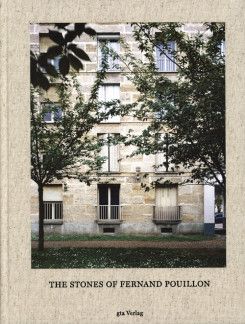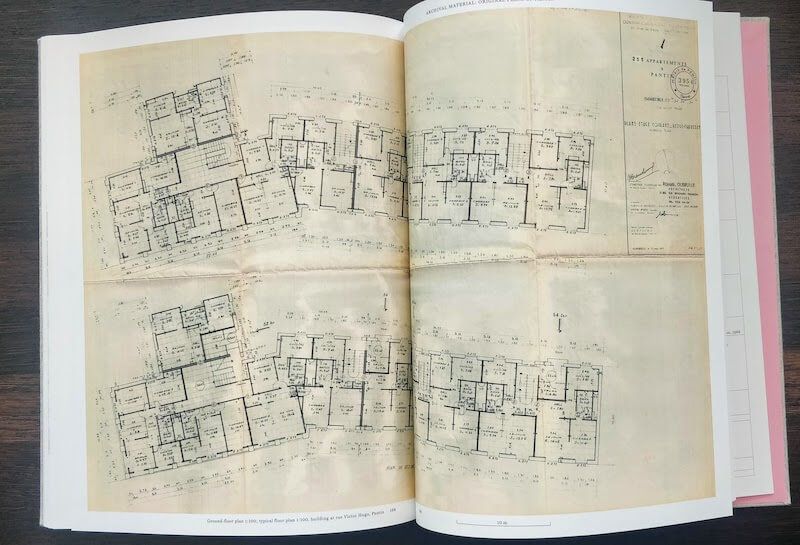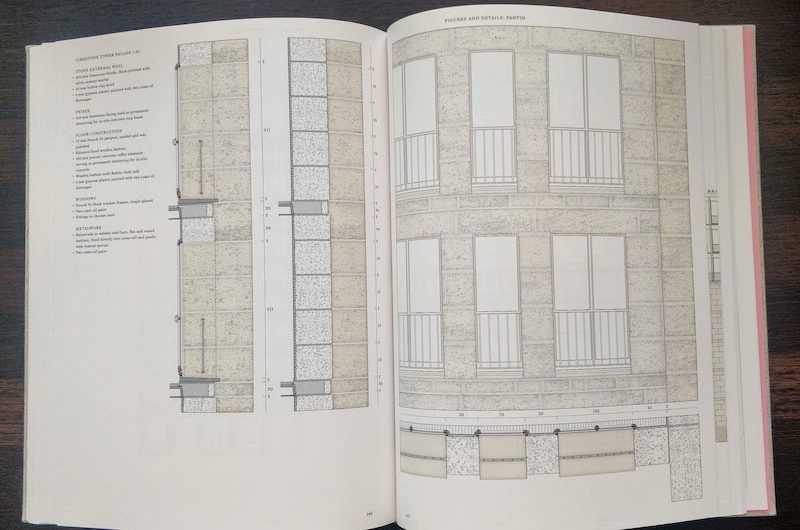The Stones of Fernand Pouillon Book Review

The Stones of Fernand Pouillon An Alternative Modernism in French Architecture.
By Adam Caruso and Helen Thomas (ed’s)(amazon.com/.co.uk)
The first work about Fernand Pouillon in English, long overdue and lovingly written. Partial in both senses of the word which gives a deep insight into his Architectural philosophy.

The Stones of Pouillon
Introduction
Pouillon belongs within an alternative tradition of modern architecture of the twentieth century.
- Adam Caruso and Helen Thomas
Fernand Pouillon was a French Architect who worked mainly in the post WWII years up to his death in 1986. He designed and built, sometimes also as the contractor, a huge amount of work in France and Algiers and he had a colorful personal and professional life. The Stones of Fernand Pouillon is the first book on his work in the English language.
On one level this is somewhat surprising, Pouillon is highly regarded in France, and he worked for many years producing a huge, varied and outstanding body of work. Yet he was and is still is an outsider from the architectural establishment actively ignored by the contemporary French Architects of the time.
While Le Corbusier fifteen years his senior but professionally overlapping, is world famous, Pouillon languishes in a kind of obscurity which belies his reputation in his life and the quality of work he left behind to posterity.
This book might help to readdress the balance within the Architectural community and it definitely goes some way to explaining why Pouillon was for so long largely ignored and why that should change.
The Stones of Fernand Pouillon
The Stones of Fernand Pouillon is a partial book. Pouillons work is large and varied and his design style contains much change, innovation and experimentation.
But this book focuses on just four projects, and two in great detail, that are very similar. This book also advocates strongly for the philosophy that these buildings represent. It wears its support proudly on its chest.
This means the book does some things well and some things not by design.
If you want an overview of all of Pouillons work and maybe some insight into his life then this book doesn’t get you far. Likewise there is little of his technological experimentation with building methods and his achievements as a contractor building quickly, efficiently and to a high quality.
But if you are happy to see some key projects in detail and have them explained and set in historical context, then this book does it better than almost any other I have read.

The photography supports the books ideas beautifully.
The Projects
The books four key projects are from Pouillons time in Paris roughly a fifteen year period from early fifties to late sixties. They are built around the same time and all large scale public housing so they are all of a type and typology. They share the same foundational ideas.
Also they were built through Pouillons company so were built with all the knowledge he gained form his earlier post war projects mostly in Marseille. So stylistically and technically they offer a full view of Pouillons ideas manifested.
They allow the editors to delve not only into this type and its philosophical foundations but to explain Pouillons divergence from Architecture of the time, and why that might be important today.
The Four projects introduced are;
- Résidence Victor Hugo Pantin Voie Privée map
- Résidence Buffalo Montrouge map
- Résidence Le Parc Meudon la-Forêt Berroua
map - Résidence Du Point-Du-Jour Boulogne-Billancourt map

Showing some original plans
Book Structure
We are introduced to the scope of the book and some of Pouillons thinking, the closed order and some of his work up to the Paris projects.
Then the four projects are briefly shown before the key text of the book, the Jacques Lacan essay about Poulloin is placed. It’s both straightforward and lyrical, two properties often absent in architectural essays.
The two Major projects of the book are then shown with beautiful drawings and photography.
Then Caruso’s essay (The Stones of Pouillon, From The Abbey of Le Thoronet to the Paris Banlieue) pulls together the threads of the more theoretical writing in the book and we return again to the two main projects with new detail drawings.
Finally some selected archival material. Pouillon left behind no official archive of his work per se. Also a really useful timeline of built projects and Bibliography. So for the English researcher into Pouillon this book is not only the only starting point but a great resource from which to explore further.

Beautiful illustrations of the elevations and sections showing the construction in detail
Open Vs Closed Order
The way into understanding Pouisson is through the opposed urban conceptions of the Closed and Open Orders.
The Closed Order engages with traditional French urban traditions, the squares, avenues, gardens and courtyards of a traditional European city. Ensembles are more essential than isolated masterpieces. The proportion also of spaces are intimately related. Outside Spaces are conceived of as rooms. Thinking of Architecture in the city in relation to the building that pre-exists it.
The Open Order, more associated to modernism where the buildings are designed in isolation and are apart from the city to some extent. A great example of this is in Marseille, with Corbusiers Unite d’habitation. Innovation and precedent are put above context and continuity. The car over the pedestrian. Genius above cooporation.
Pouillon represents here the Closed Order a continuity with traditional preoccupations although without traditionalist hangups. Here as the profession turned fully away from its C19th heritage Pouillon just ignored the new orthodoxy proffering to stay true to what he believed. It’s what makes his projects so enchanting nowadays, a kind of alternative modern architecture, an avenue the profession chose not to pursue.
The Physical Book
It couldn’t be an ebook. It’s physical presence is every bit designed as one of Pouillon’s buildings.
It’s a large 24x32 cm format hovering between a4 and a3 size. It’s beautifully and carefully put together in every detail. In every sense this book is itself a careful construction, every detail has been thought through. The cover is fabric the the paper heavy and Matt.

Photography by Hélène Binet is outstanding and beautifully presented.
Conclusion
Caruso and Thomas are able to clearly locate Pouillons ideas and so reveal his Architectural project in as clear a way as I think is possible.
By leaving out so much they give us as prepared and clear slice of Pouillon as is possible. A beautiful cross-section maybe!
It comes at a cost, the messiness of real life and the evolution of ideas, so much of what Pouillon also has to offer, is withheld. But that is how the book is meant to be. Pouillon here is sometimes the vector by which to advocate for the authors ideas about the city and about urbanism in regards to built projects. So his buildings speak in Architectural terms only, we get clarity distilled.
Pouillon is thus the way in which the Open vs Closed system of city planning is illustrated. Pouissons communalities with the authors own practice Caruso St.John Architects are really clear here in their treatment of elevations and of the tectonic properties of their projects.
Hélène Binet the photographer for the book really has managed to capture the urban character of these buildings too. They are fantastic photos and they add to the feeling of completeness of the book within its own tight focus.
This book is like a four course meal with wine chosen for every course. It’s a kind of carefully arranged, crafted introduction to Pouillon.
Nothing in this book seems left to chance, but thought through and deliberate. I love it and anyone looking for a modern way of building which preserves those things about culture and history in architecture would do well to get this book, enjoy, absorb and learn.
I say that he who, without betraying the constraints of the modern programme or materials, produces a work that seems to have always existed - that is, in a word, banal - may consider himself a man well satisfied.
- Auguste Perret
Further Reading:
- Fernand Pouillon Architecture Misfit is a nice overview of Pouillon work with some ideas about why he is a misfit.
Links to this Post
- ../07-18-Fernand-Pouillon-The-Future-That-Didnt-Happen/Fernand Pouillon - The Future That Didn’t Happen
- Fernand Pouillon